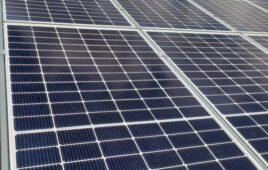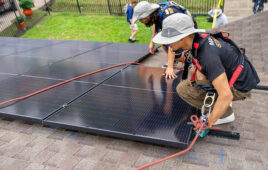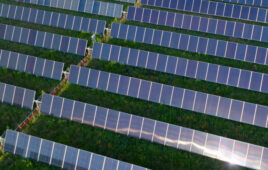The Federal Energy Regulatory Commission (FERC) and the U.S. Energy Information Administration (EIA), solar, wind, and other renewable energy sources (i.e., biomass, geothermal, hydropower) provided 96.3% of the domestic electrical generating capacity added in January and February 2022, according to a review by the SUN DAY Campaign.
According to the latest issue of FERC’s” Energy Infrastructure Update” (with data through February 28, 2022), utility-scale wind and solar facilities added 3,976 megawatts (MW) of new generating capacity during the first two months of this year.
EIA reports that solar-generated electricity (including small-scale solar) grew by 35.6% during the first two months of 2022 compared to the same period last year. Combined, electrical generation by wind and solar increased by more than a third (33.8%).
Including hydropower, biomass, and geothermal, renewably-generated electricity grew by 21.1% and provided 22.8% of U.S. electrical generation in January and February — up from 19.7% a year earlier. Together, wind and solar-generated nearly a seventh (14.1%) of the nation’s electricity.
Thus far in 2022, electrical generation by renewable sources has surpassed that of coal by 2.9%. Renewables also continue to widen their lead over nuclear power, exceeding the latter’s output by 23.0%.
FERC’s data shows that as of the end of February, utility-scale renewables accounted for more than 26.3% of total available installed generating capacity in the U.S. Over the next three years, net “high probability” additions could increase utility-scale solar by 58,688-MW. (And that does not include small-scale solar which presently accounts for nearly 30% of all solar-generated electricity). FERC further reports that there may actually be as much as 181,577-MW of solar in the pipeline.
If just the “high probability” additions were to come online, by early 2025 utility-scale renewables would be 31.2% of total U.S. generating capacity with wind and solar reaching 12.0% and 10.0% respectively. Meanwhile, coal’s share would drop from 18.3% to 15.1% and that of nuclear power would fall from 8.2% to 7.9%. Natural gas would also decline to 43.0% from 44.0% today.
“FERC’s and EIA’s latest data once again confirm the remarkable growth of solar and wind that heralds the accelerating transition away from fossil fuels and nuclear power,” noted Ken Bossong, executive director of the SUN DAY Campaign. “And with each passing month, renewables are outpacing those agencies’ forecasts.”
News item from SUN DAY Campaign





Too bad the EIA didn’t add what different amounts of battery energy storage systems would do to extend the solar PV, wind generation part of the day to increase the ability to use these two resources for more of the daily energy needs for the U.S. as a whole. There’re enough physics students out there that could model the U.S. grid and use the University “super computers” to model what a distributed grid with micro or is that macrogrids constructed across the U.S. interconnecting the many generation resources across the country into a coherent wholesale interconnected grid feeding many microgrids.